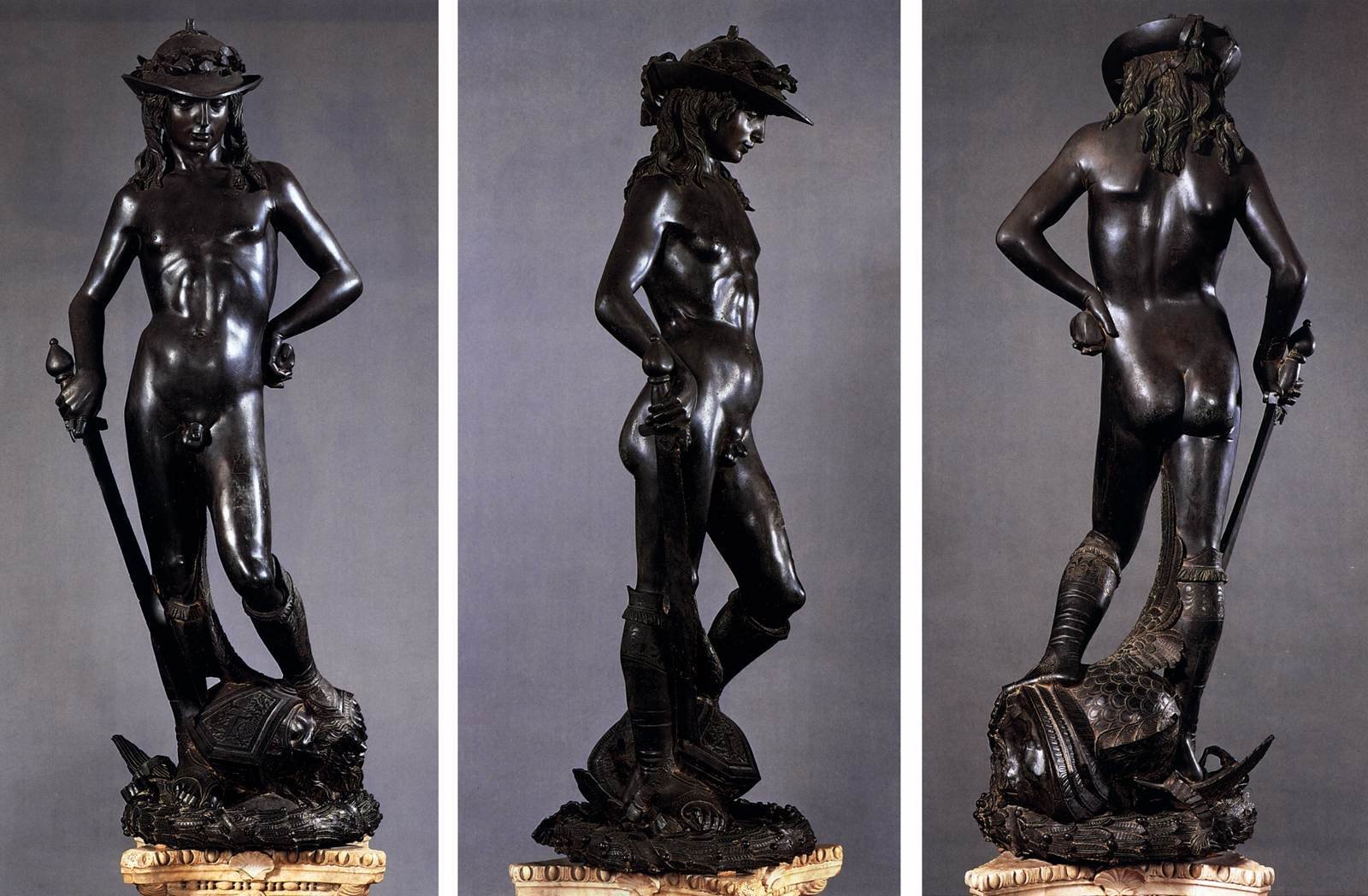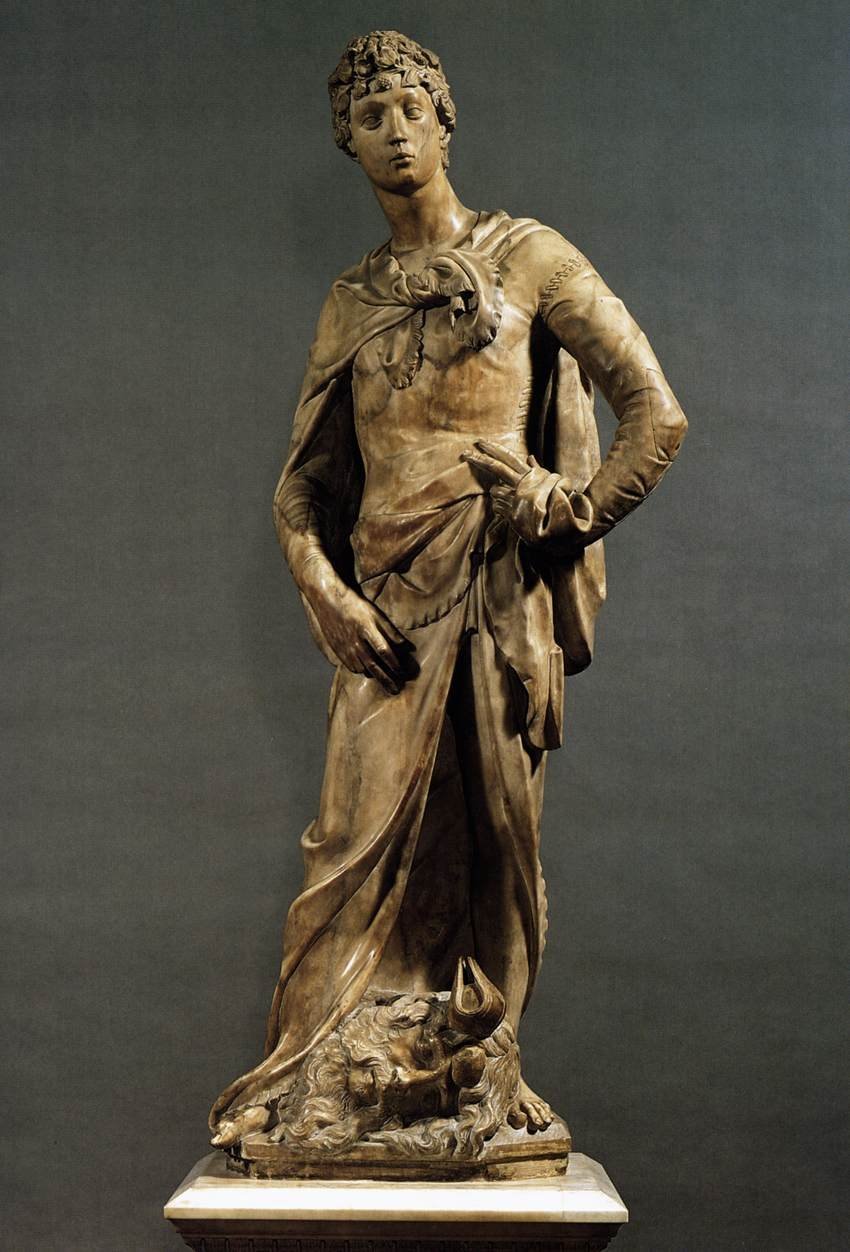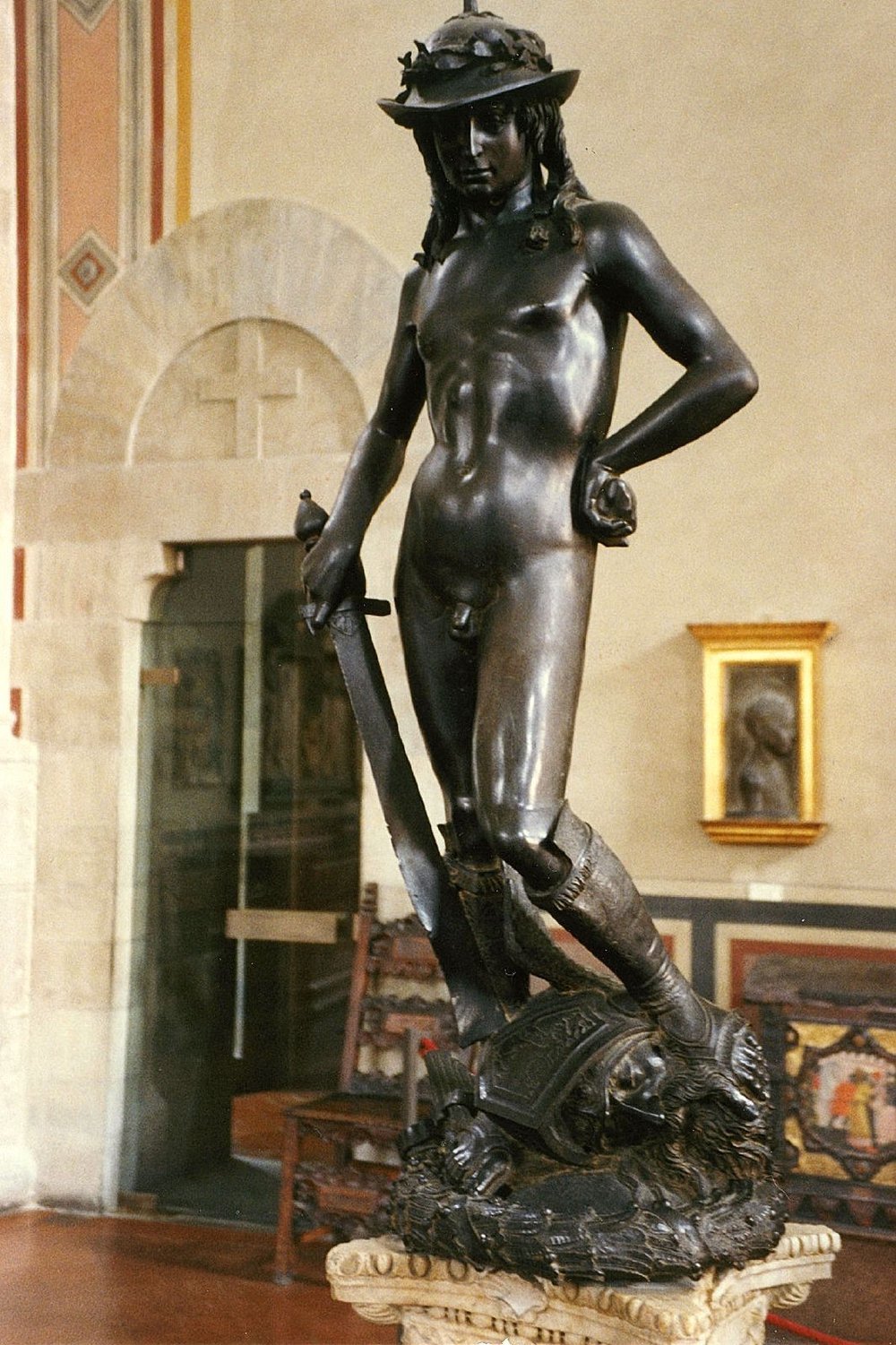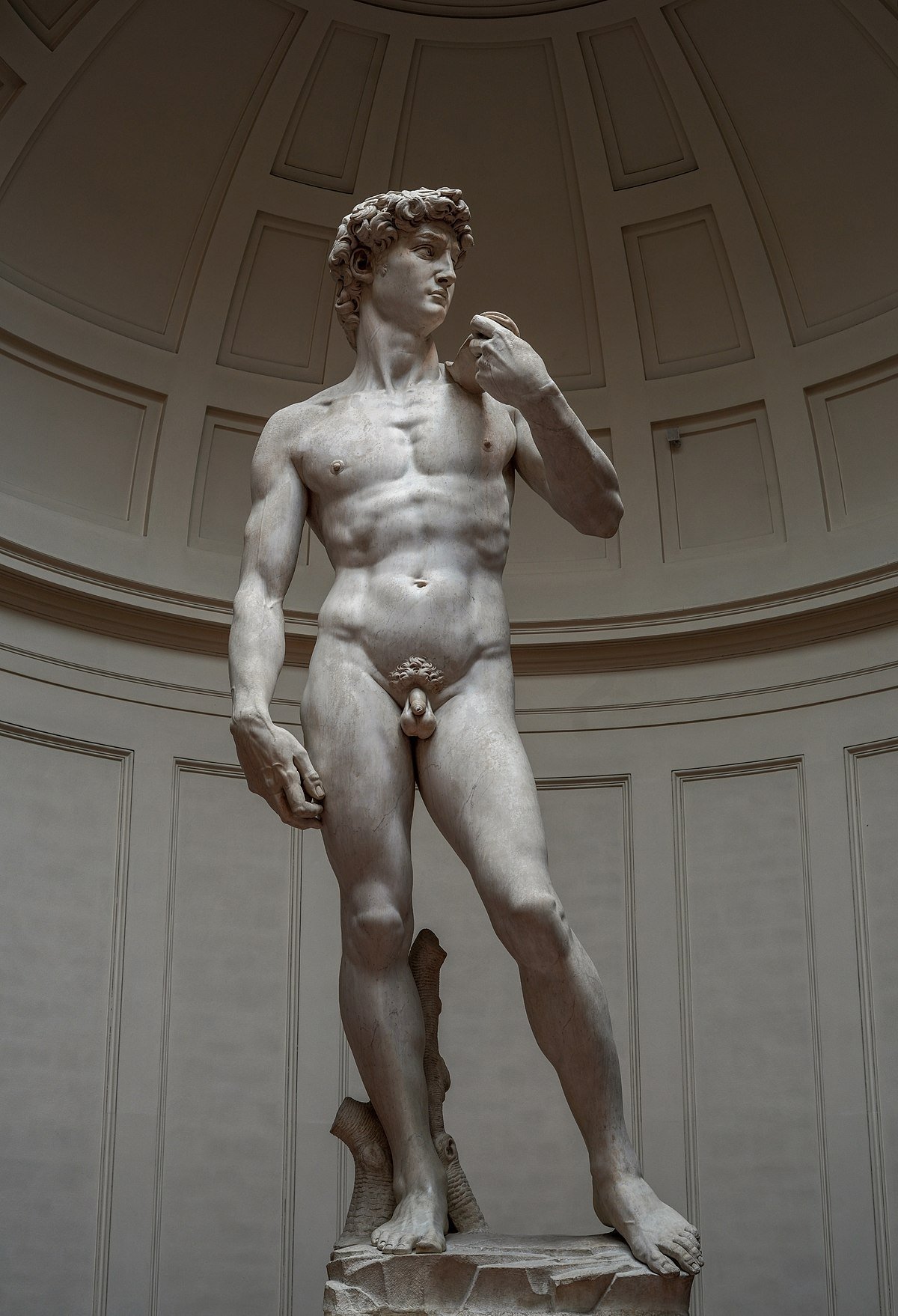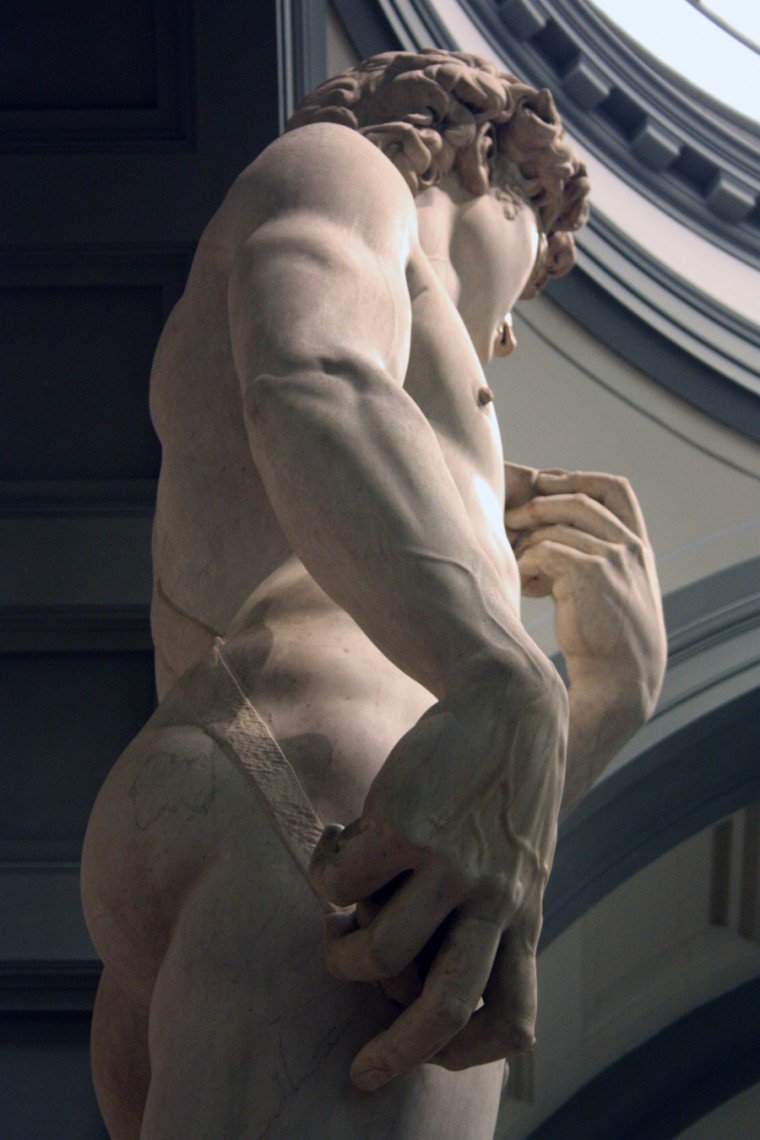Marble Masculinity: Pre-modern Art and the Modern Issues of Male Identity
by George Fountain
John Henry Foley, Detail of Caractacus, 1859, marble, City of London Guildhall Art Gallery, London (Image: Pinterest)
Last year’s Movember marked the 17th anniversary of this initiative to use growing moustaches as a way of raising awareness about serious issues around men’s health (including male suicide). Although Movember is over for another year, at a time when many countries across the world are entering new lockdowns – along with much frustration and, for many, loneliness – now is a critical moment for young men to reflect upon themselves and their identity. This is even more true given the scrutiny of the concept of ‘masculinity’, as the world becomes increasingly aware of the plight of those victimised by its darker side.
Art has a powerful part to play in this discussion, as demonstrated by the Wallace Collection’s wonderful exhibition, ‘Frans Hals: The Male Portrait’, a review of which can be found here. Such critical interrogations of ‘masculinity’ also stretch as far back as the ancient world and the cultural roots of western civilisation. Exploring how young men were represented, idealised, and sometimes memorialised in pre-modern art is a powerful way to enrich modern discussions about manhood.
Donato di Diccolò di Betto Bardi, called Donatello, David, c. 1440, bronze, 158 cm (height), Museo del Bargello, Florence (Image: Web Gallery of Art)
During the 1440s, the Italian city of Florence was flourishing in finances, political power and, of course, the arts. The city’s foremost sculptor, Donatello, unveiled a sleek bronze statue of a naked boy standing with sword and sling shot in hand. At his feet lies the decapitated head of a giant. David’s slaying of Goliath is a tale that, even today, still embodies strength and defiance; for fifteenth-century Florence, he reflected the Republic’s underdog mentality at a time when it was constantly threatened by greater powers. This was Donatello’s second sculpture of the Biblical shepherd-turned-king, the earlier work being a relatively conservative, armoured iteration of the hero in marble. His bronze David was a far cry from its predecessor, and not only in its materials and clothing… It also harked back to the practices and styles of the ancient world (it was thought to be the first free-standing nude sculpture since antiquity).
Over the course of the sixth, fifth, and fourth centuries BC, the ‘Heroic Nudes’ of classical Greek sculpture had gradually evolved, developing in anatomical understanding, technical virtuosity, and artistic expression. They presented a sweeping variety of ‘idealised’ male forms; from Polykleitos’ athletic Doryphoros and the hulking Herakles by Lysippos, to the slender, androgynous figures of Praxiteles. These ‘Heroic Nudes’ invited viewers to worship and celebrate the male form in all its glory. As the capabilities and dynamism of this sculptural craft developed, so too did the range in which masculinity was represented. Donatello’s bronze David – with all of his boyish swagger – revived these idealising classical principles. With his foot placed triumphantly on Goliath’s severed head and his hand resting on a cocked hip, the victorious shepherd seems to sashay over his foe. Much like the tongue-in-cheek gods sculpted by Praxiteles, the smoothness of David’s body and provocative nature of his pose lend him an inescapably androgynous quality.
Donato di Diccolò di Betto Bardi, called Donatello, David, 1415/16, marble, 191 cm (height), Museo del Bargello, Florence (Image: Web Gallery of Art)
Praxiteles, Apollo Sauroktonis (Apollo the Lizard-killer), marble copy (original in bronze), c. AD 25-50 (original created c. 350-340 BC), 167 cm (height), Louvre Museum, Paris (Image: Louvre)
Donato di Diccolò di Betto Bardi, called Donatello, David, c. 1440, bronze, 158 cm (height), Museo del Bargello, Florence (Image: Wikipedia)
How exactly this effeminate permutation of their adopted patron was received by the city of Florence is not entirely clear, but it has certainly spurred much discussion in more recent art history. There are still debates as to whether Donatello chose this design to emphasise David’s youth or to accentuate his divine triumph. Others argue that the sculpture is evidence of the artist’s own theorised homosexuality (thereby transforming David from a biblical king into a gay icon). Whichever view one takes, it remains true that Donatello captured in bronze the malleable nature of maleness. Much like the varying Classical interpretations of the idealised man, Donatello’s imaginative re-forging of David visually outlines the deep-rooted diversity of masculinity.
Today, Donatello’s David can be seen in Florence’s Bargello (next to its marble cousin), still resplendent after nearly 600 years, and no less important in its thought-provoking portrayal of a young man in the throes of greatness. However, despite the immense importance and popularity of Donatello’s work, it was neither the definitive David, nor the definitive male nude of its era.
For decades after Donatello’s bronze David, the proposal of an enormous marble statue of David floated around Florence. It was a daunting task: at the centre of this challenge was a giant block of Carrera marble, 540cm in height, from which ‘il gigante’ would be hewn. The contract had been picked up and dropped by numerous artists throughout the 1460s and ‘70s, and despite some preliminary efforts being made on the monolith, it lay abandoned for 26 years. Finally, in 1500, Florence’s overseers settled on a young artist whose career was in ascendancy: Michelangelo di Ludovico Buonarroti Simoni.
Michelangelo di Ludovico Bunarroti Simoni, David, 1501-1504, marble, 517 cm (height), Galleria dell’ Accademia, Florence (Image: Wikipedia)
Michelangelo di Ludovico Bunarroti Simoni, Detail of David, 1501-1504, Carrera marble, 517 cm (height), Galleria dell’ Accademia, Florence (Image: Galleria dell’ Accademia)
One of the most prolific artists in history, Michelangelo’s talent as a great sculptor, painter, and architect would be one of the defining forces of what we now call the Italian Renaissance. Yet there was another side to this old master. Particularly in his later life, Michelangelo’s emotional torment, strained relationships, struggles with faith, theorised homosexuality, and potential mental illness all contributed to his intense internal strife – one with which many today can empathise. Earlier in his life, however, in 1501, Michelangelo was a confident virtuoso in his mid-twenties, returning to Florence after enjoying great success in Rome. Quickly receiving an official commission for the David, he worked on the marble for nearly two and a half years.
Beyond its sheer scale, there were other practical challenges to this project. The marble block was awkwardly shallow for its size, it had numerous imperfections, taroli, which threatened its integrity, and it had been inelegantly worked by previous sculptors. To compound this problem, the monolith was expensive and had become something of a burden to city’s public works – another would not be purchased and there were no second chances. The young Michelangelo had, for all intents and purposes, one shot at perfection, using hand, hammer, chisel, and bow to free from this single block one of the greatest works of sculpture ever made. Upon completion, Michelangelo’s David was greeted with rapturous praise and placed in Florence’s main square, the Piazza della Signoria, taking pride of place by the heart of the city’s government as a political icon – though not without suffering some dissenters and later acts of violence.
Giuseppe Zocchi, Piazza della Signoria, 18th century, private collection (Image: Italian Art Society)
Vincenzo Paganori, photograph of Michelangelo’s David inside a wagon in Piazza della Signoria just before being transported on rail to the Accademia di Belle Arti of Florence, 1873 (Image: V&A Blog)
Standing at 517cm tall, the finished work is striking for several reasons beyond its immense size. Like the late Donatello before him, Michelangelo emphasises the boyhood of David. Unlike Donatello, however, this wasn’t expressed through a softened, boyish body – Michelangelo’s David is strikingly muscular – but rather through a clever understanding of anatomy. With slightly gangly limbs, and hands and feet that appear just too large for the rest of his body, this David captures the physical awkwardness of a growing adolescent. Michelangelo’s David is a boy on the cusp of manhood, and not just in physical terms.
Unlike so many other images of the future king, Michelangelo captures David before his clash with Goliath, depicting a moment of contemplation in which the young shepherd considers how he will slay the giant before him. Thus we see a celebration of a man of thought as much as a man of action. The sculpture itself reflects the physical and mental determination that enabled its own creation; just as David stands back, contemplating his shot, so too did the young Michelangelo pause to consider how he might next strike the colossal figure taking shape before him.
Now housed safely in the Florentine Galleria dell ’Accademia, Michelangelo’s David is far more than an insightful representation of young manhood, it is the product of two interweaving tales of determination and courage. It is an icon which powerfully encapsulates how young men of the 21st century may use pre-modern art to look ahead to their own maturity – and, crucially, how art might inspire them to slay their own giants; be they societal expectations, ‘toxic masculinity’ or mental illness. Modern masculinity - with all of its complexities - may not always be solved by David’s one miraculous shot, but rather by Michelangelo’s method of gradually chipping away, pausing and reflecting over a matter of years, until finally something beautiful stands in its place.
George Fountain is an art historian and writer based in London. With a background in Ancient Greek sculpture, he holds an MA from the Courtauld Institute of Art where he specialised in sixteenth-century Venetian art.

